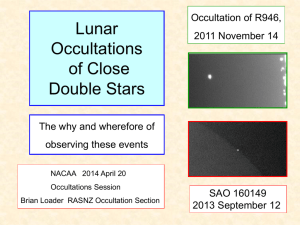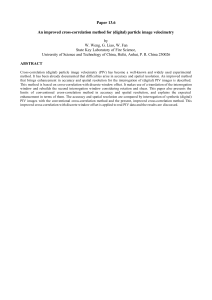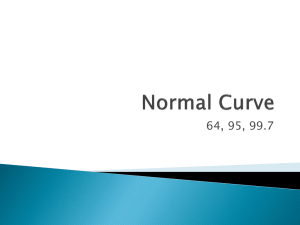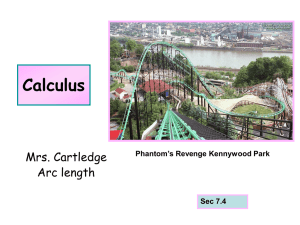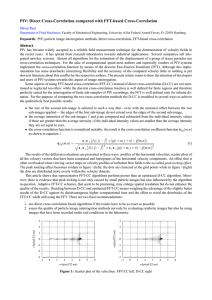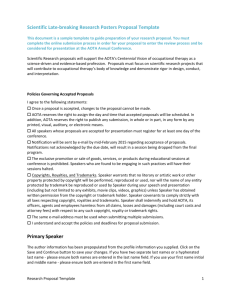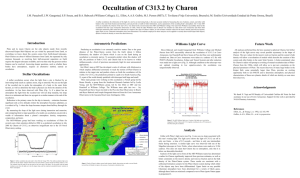AOTA - Asteroid Occultation Updates
advertisement
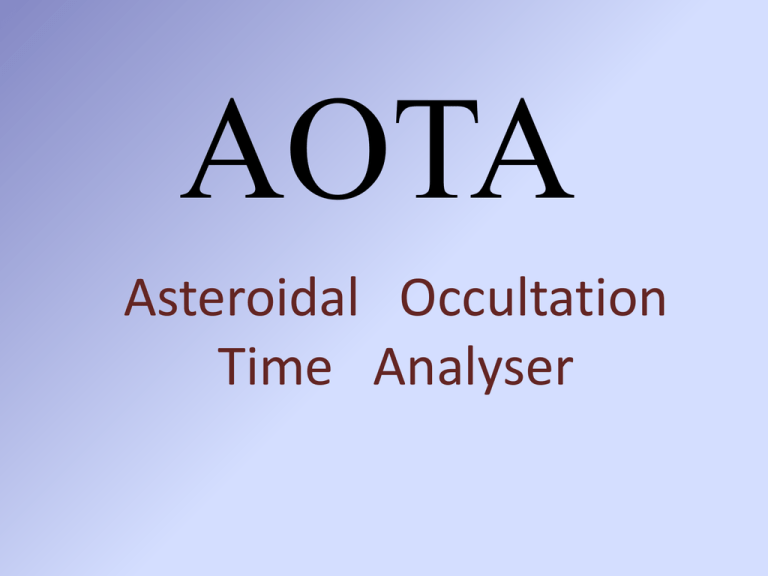
AOTA Asteroidal Occultation Time Analyser AOTA is in Occult 4.1.0.14 and looks like: Aim • Create an alternative tool to analyse asteroidal occultation light curves • Focus on measuring the D and R events independently • Handle Limovie & Tangra files • Handle output from integrating cameras • Clear presentation of what is ‘going on’ • User friendliness & simplicity – as much as possible! Basic methodology • Putative events identified using crosscorrelation analysis • D and R events analysed by fitting a test light curve of varying transition duration, using a χ2 best fit analysis • Uncertainties determined using a Monte Carlo analysis, with noise applied to the test light curve An interesting issue Cross-correlation function & event times The value of the cross-correlation function has a small dependency on the ratio of the occultation duration to the test signal length. cross-correlation function is not ideal for identifying precise event times. Event identification • Test signal extends for the entire recording duration • Sets a minimum cross-correlation level for a possible event • Look for symmetric triangle, straight sides, sharp apex, peak above orange region at bottom, and light curve flat across the bottom. Symmetric triangle with straight sides, sharp apex, flat light curve at bottom (see 5 orange bars) Cloud event – asymmetric, non-straight sides, no sharp apex, light curve at bottom not flat (see orange bars) Can overlay comparison stars • Note how the green line drops at the same time as the cloud event, but not for the occultation Can identify up to 5 putative events • Each event can be separately analysed Final plot showing fitted light curve and uncertainties Some events have two discrete possibilities Dunham-Agamemnon Accuracy visible via χ2 curves Well-defined event Small uncertainty on the ‘-’ side, large on the ‘+’ side Poorly-defined event True gradual events have a rise and fall in the plot of χ2 Output values The AOTA output is: • Event ‘time’ and uncertainty in frames • Values of 0.5 arise only with transitions extending an even number of frames • Sub-frame calculations not done. • Conversion to time not implemented. Many issues to deal with – such as camera and VTI characteristics Detailed Help file provided, with step-by-step instructions and guidance on interpretation Future developments • Possibility of adding functionality to convert event frames to event times • Tangra to interface directly with AOTA – so that the AOTA functionality is directly available when an event is measured with Tangra • Enhancements - driven by user feedback!

